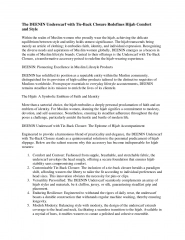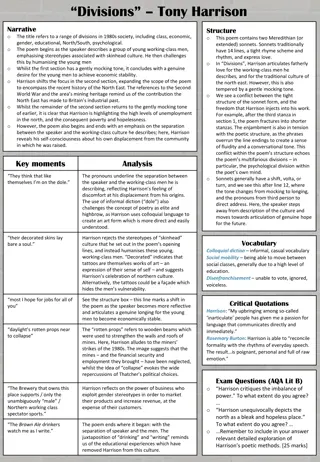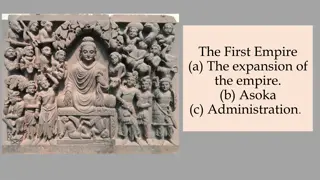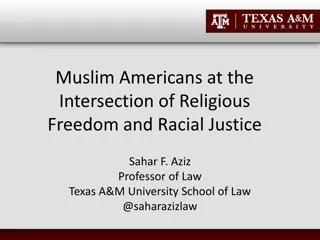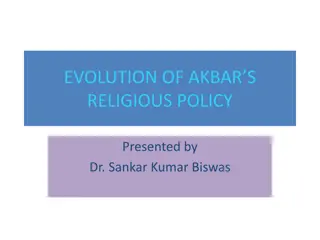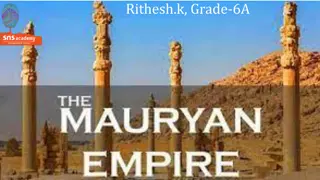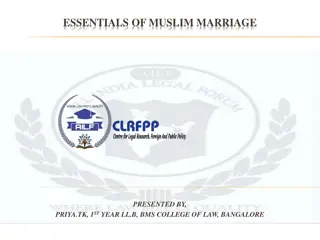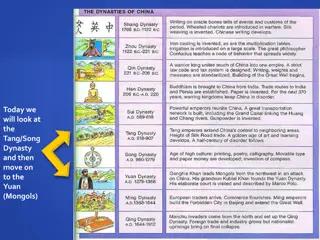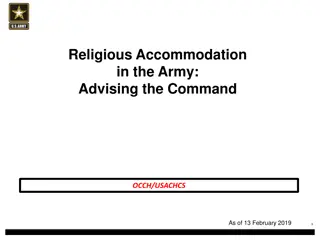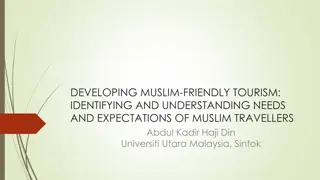Muslim Empire: Success & Religious Divisions
The rise of the Muslim empire, key similarities and differences between Islam and Judaism/Christianity, factors contributing to rapid expansion, and the religious divisions between Shiites and Sunnis. Dive into historical events like Muhammad's death, Abu Bakr's leadership, and the Age of Conquests. Delve into critical thinking questions regarding the empire's spread and understand the distinctions in beliefs among different Islamic sects.
Download Presentation

Please find below an Image/Link to download the presentation.
The content on the website is provided AS IS for your information and personal use only. It may not be sold, licensed, or shared on other websites without obtaining consent from the author.If you encounter any issues during the download, it is possible that the publisher has removed the file from their server.
You are allowed to download the files provided on this website for personal or commercial use, subject to the condition that they are used lawfully. All files are the property of their respective owners.
The content on the website is provided AS IS for your information and personal use only. It may not be sold, licensed, or shared on other websites without obtaining consent from the author.
E N D
Presentation Transcript
Homework I-4 due tomorrow. Current Events #2 due Tuesday.
Aim #4: How did the Muslims succeed in building an empire, and what divisions emerged within that empire? Do Now: Based on your discussion of the Five Pillars and the other core beliefs of Islam, what do you see as some of the key similarities between Islam and Judaism and Christianity? What are some of the differences?
I. Islam vs. Judaism/Christianity Similarities Differences Muslims view Jesus as a prophet, but not the son of God. People of the Book: Each have a holy book with similar teachings. Qur an perfects the teachings of the Torah and the Bible. Believe in heaven, hell, and a final day of judgment.
II. Muhammad Dies A. Muhammad dies in 632 A.D., two years after returning to Mecca B. Abu Bakr (Muh s father-in-law) becomes the caliph, or the successor to Muh as political leader of the Muslims.
III. The Age of Conquests A. Abu Bakr succeeds in holding Muslims together. B. Between 632-750 A.D., Abu Bakr and the following caliphs conquer big chunks of Byzantine Empire, Persian Empire, Northern Africa and Spain (center at Cordoba).
Critical Thinking Question Which of the following factors do you think contributed the most to the Muslim Empire spreading so quickly? Belief in jihad: Waging war against nonbelievers in the name of the Muslim religion. Byzantines and the Persians were weak and divided. Kind treatment of conquered peoples (Jews and Christians allowed to serve as officials and scholars).
IV. Religious Divisions A. Shiites vs. Sunnis - Caliphs Ali (Muh s son-in-law) and Husayn (Muh s grandson) are assassinated, replaced by the Umayyad Dynasty (rule Muslim Empire from 661- 750, capital in Damascus). Shiites: Loyal to Ali and Husayn. Caliph must be a direct descendant of Muhammad and should be viewed as a holy figure. Sunnis: Loyal to the Umayyads. Caliph can be any qualified individual of the Muslim community. He should be viewed only as a political leader.
Sunnis vs. Shiites Activity Read over the comparison chart of Sunnis and Shiites, and make a list of the most important similarities and differences between them.
Concluding Question What effects do you predict the Sunni/Shiite split will have on the future of the Muslim Empire?


